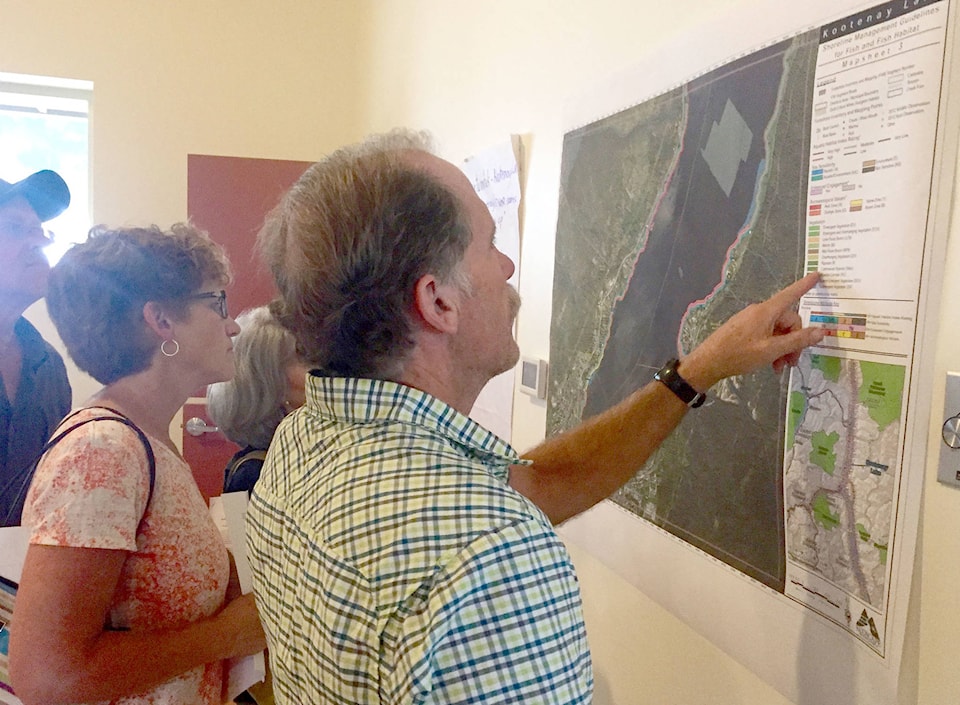They’re just not buying it.
The Kootenay Lake shoreline homeowners who attended a public meeting on Tuesday evening were not satisfied with the answers they received, and are afraid that following the newly released guidance document could result in them losing money.
“Waterfront owners can expect to pay thousands in consulting fees to develop waterfront — for example, applying for special permission for docks,” Cheryl Graham wrote in a press release.
She’s the president of the Kootenay Lake Waterfront Property Owner’s Society (KLWPOS), and during the meeting she expressed her concerns that new rules and regulations would be brought into effect, miring developers in red tape — something organizers assured her wouldn’t happen.
On top of that, she has a problem with the Kootenay Lake Partnership (KLP), which is headed up by Heather Leschied. According to Graham, the homeowners’ attempts to get involved with them were repeatedly rebuffed.
“We are saddened that our group was excluded in the development of these guidelines for the shorelines of Kootenay Lake. We … requested a seat at KLP years ago but were ignored, even though they let other non-government groups participate.”
Graham claims that there are a number of “inconsistencies, errors and problems” with the guidance document, a concern seconded by former RDCK Area E representative and waterfront owner Josh Smienk.
They’re worried that adding First Nations cultural concerns and archeological assessments into the mix will create an unreasonable financial burden for people looking to develop.
“Consulting with Native bands is the responsibility of the province, not individuals,” she wrote.
Smienk feels the government has made an error in judgment by excluding homeowners, and he criticized the consultation process.
During the meeting few questions were taken, the acoustics were poor and there was no microphone provided — another common gripe from the audience.
“Somehow the bureaucrats who drew up this plan thought it was best to exclude waterfront owners participation in this important planning document … This is not a transparent process, and the public meeting was a waste of people’s time.”
